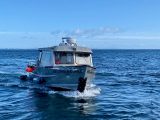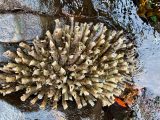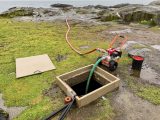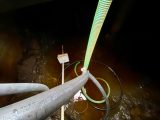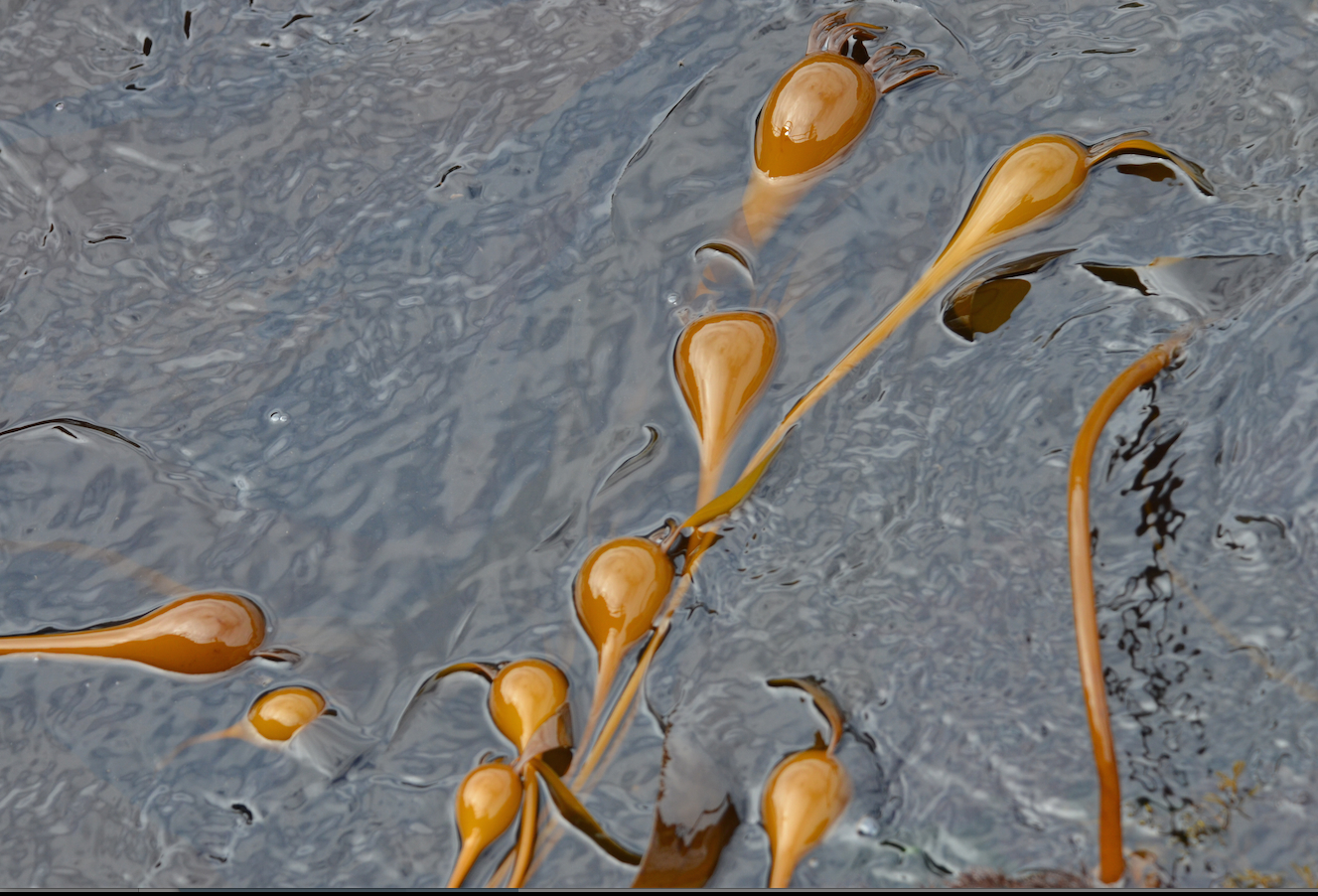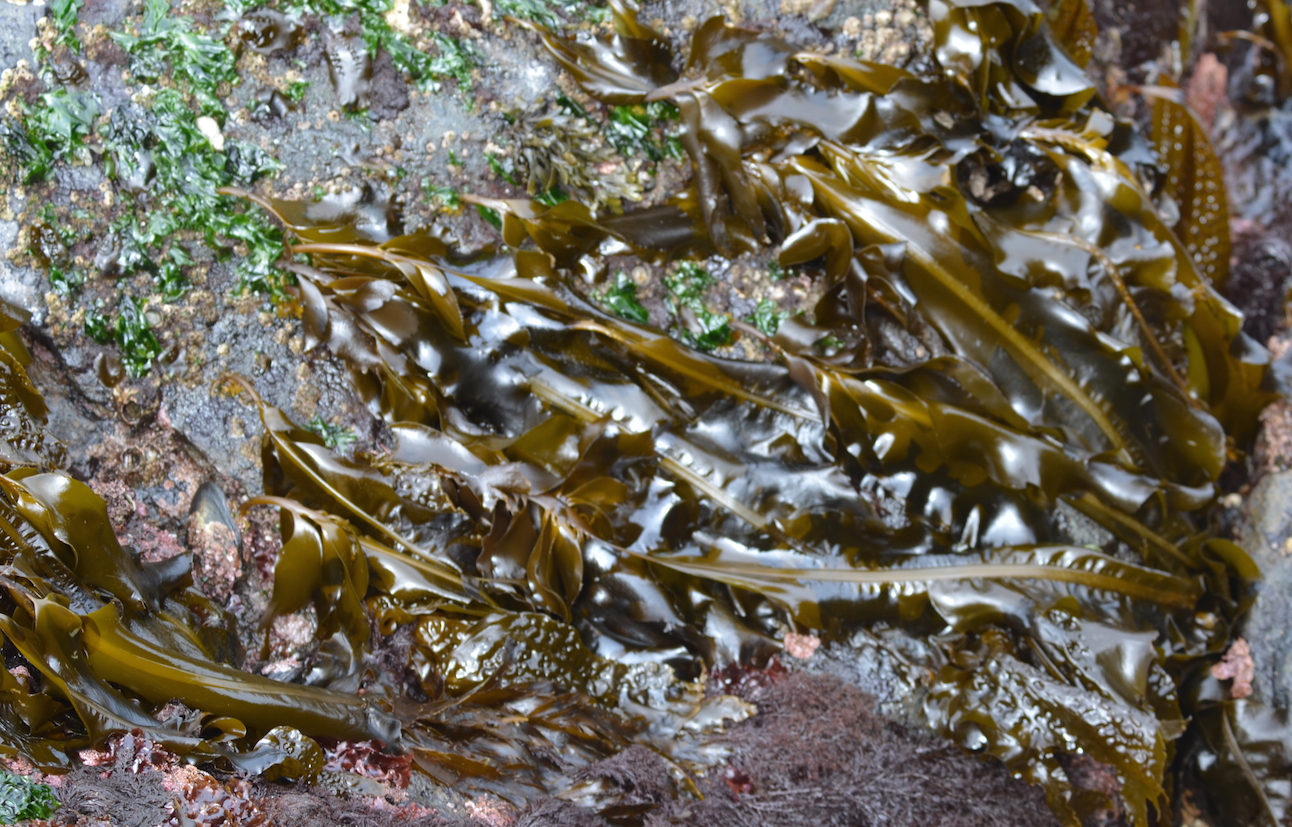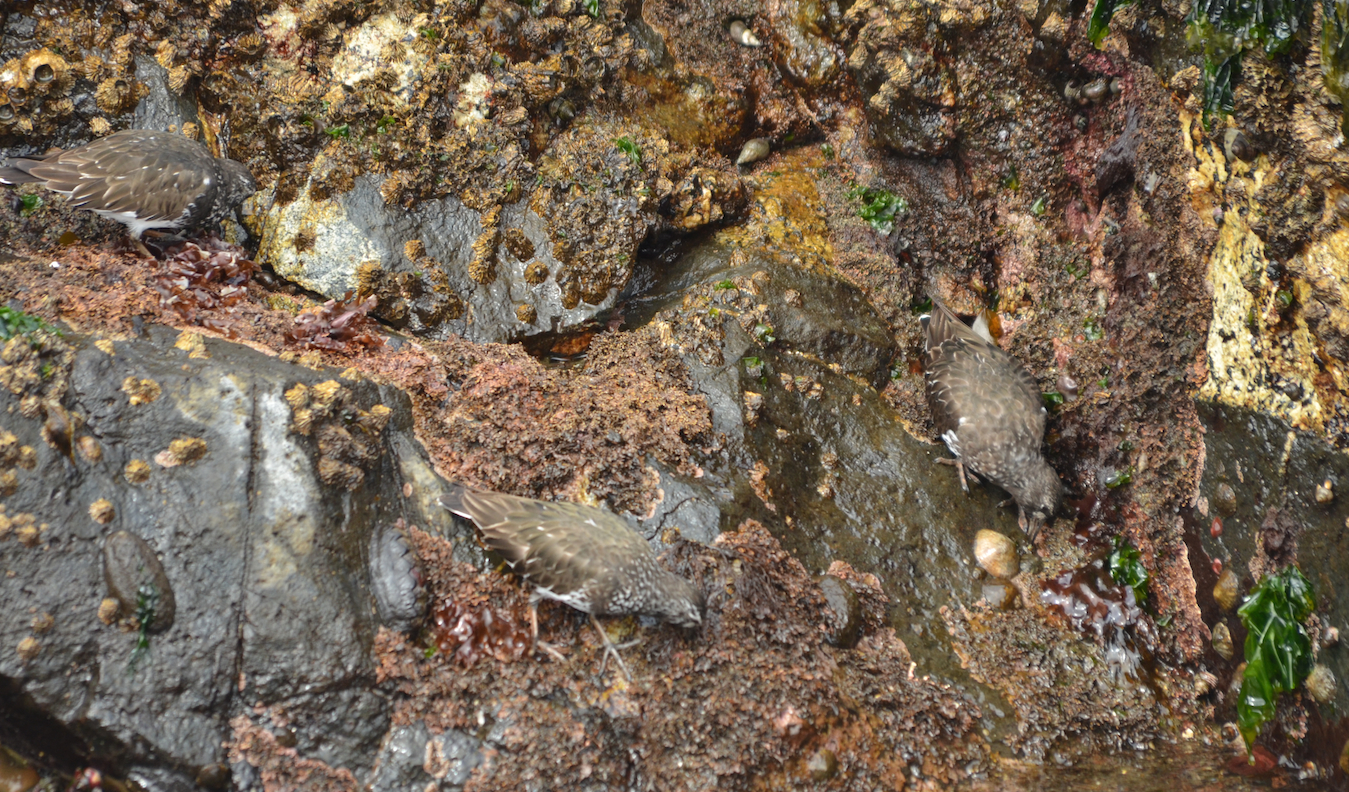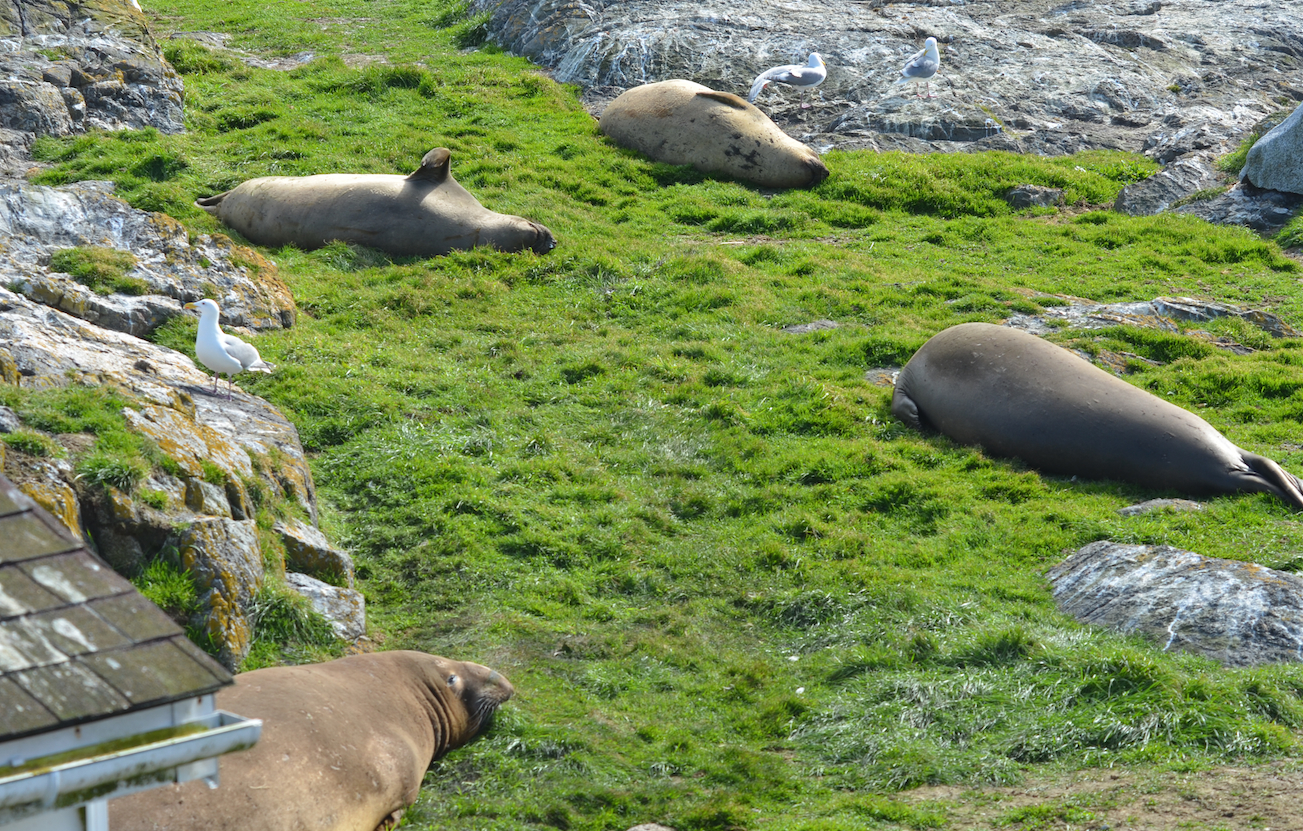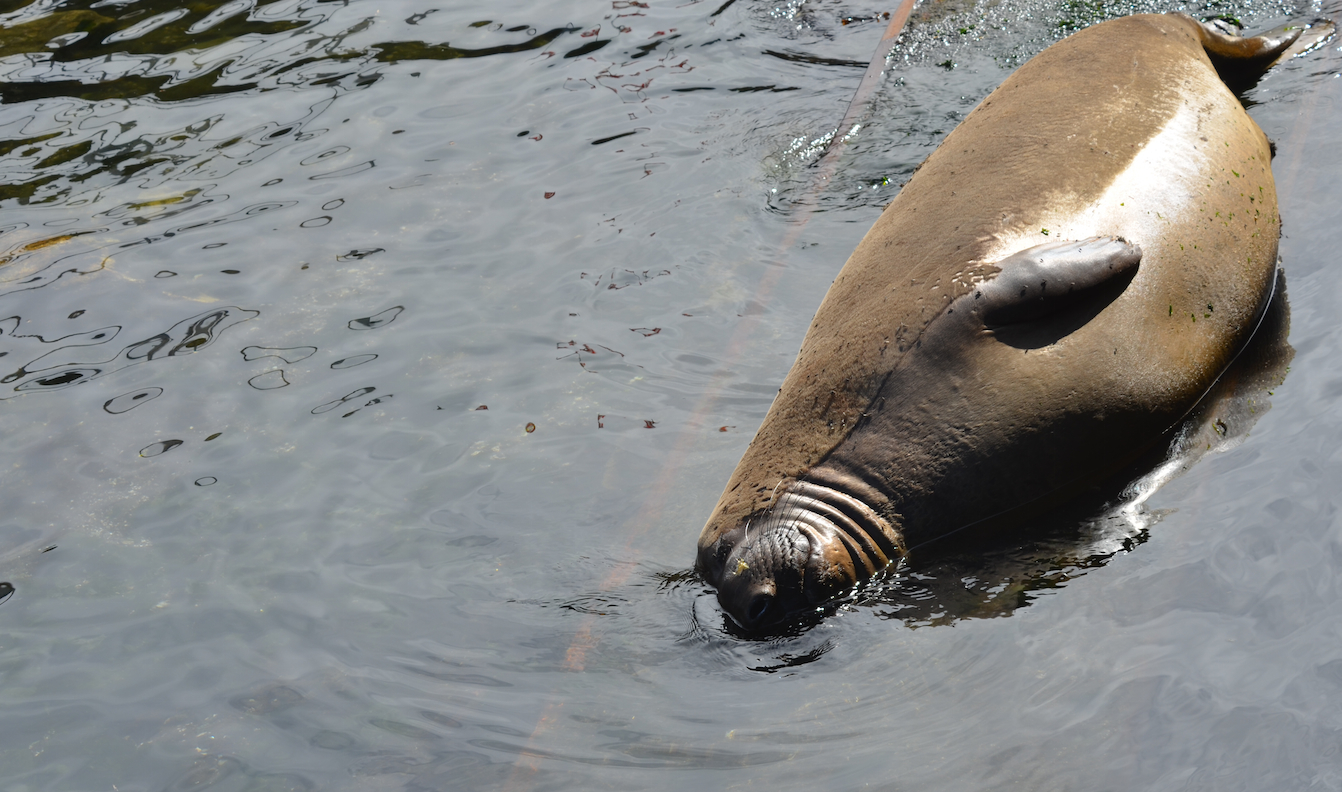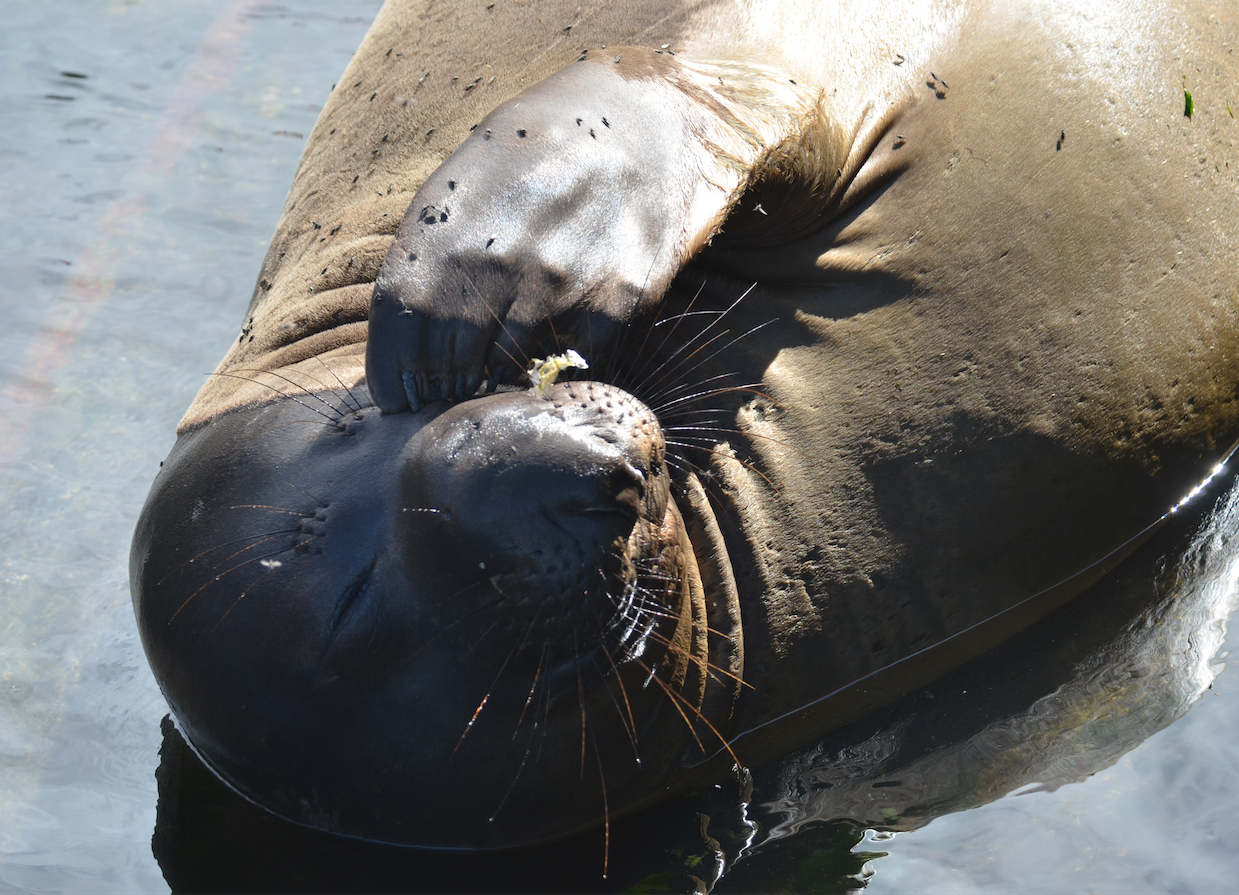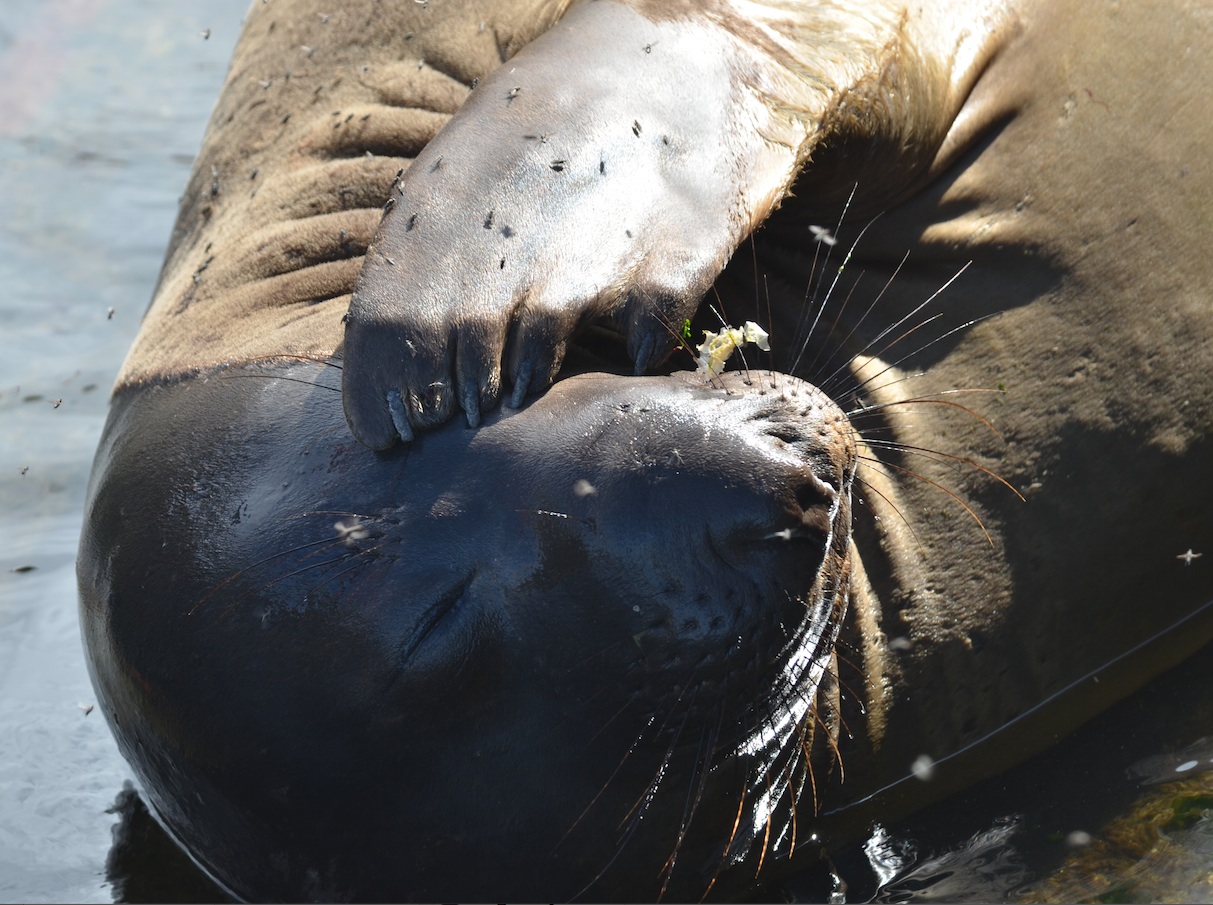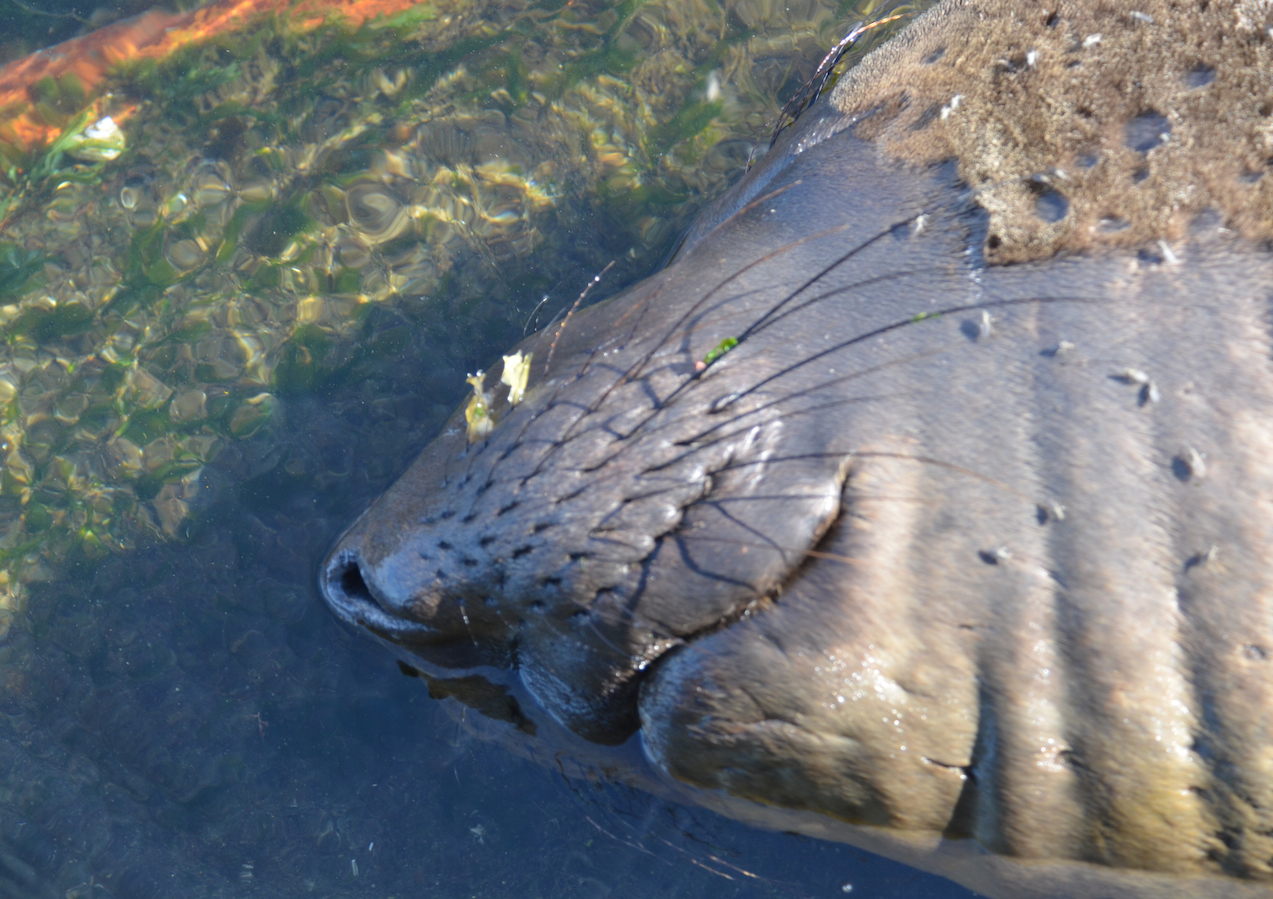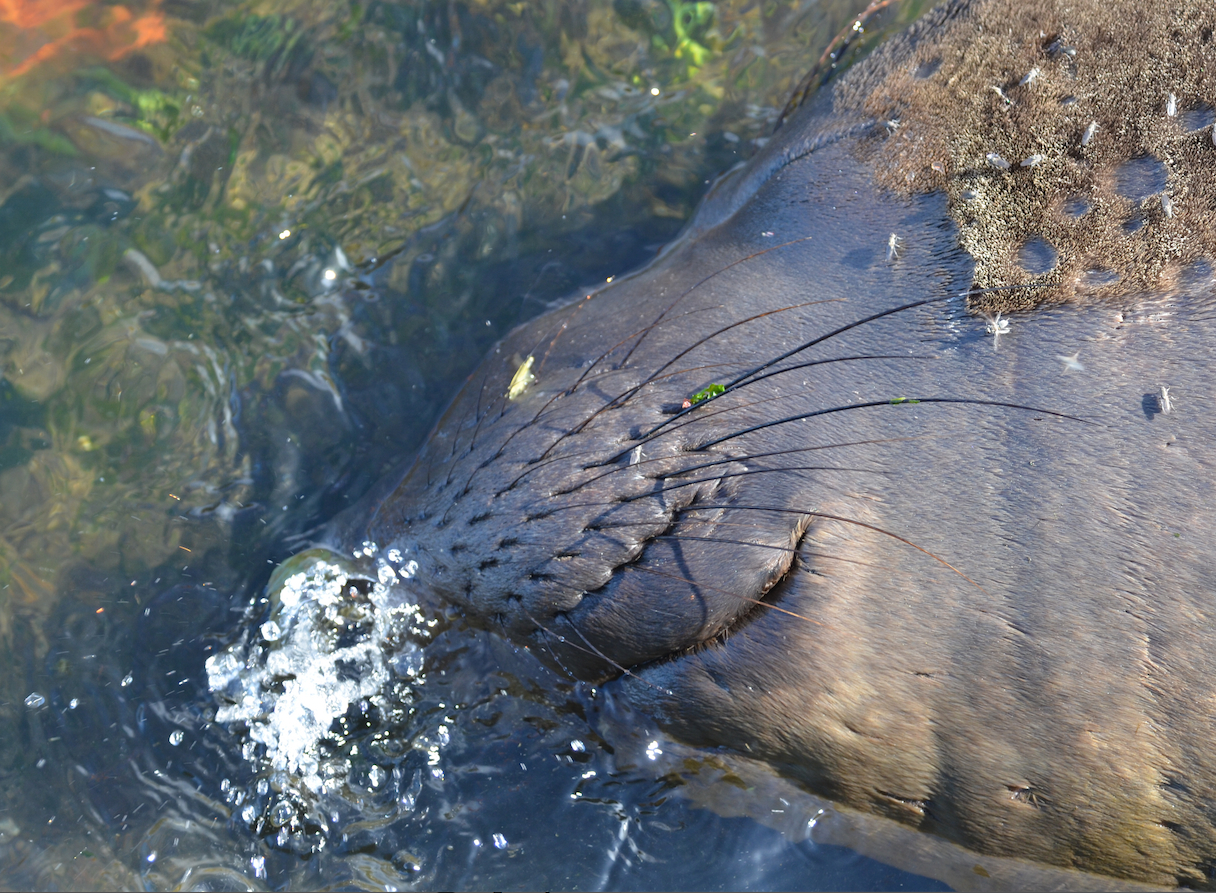Wind: yesterday 2-42 knots variable directions, today 0-31 knots from N in am and W in pm
Sea State: yesterday chop up to 1 m, today rippled then up to 1 m chop in afternoon
Visibility: yesterday 10 NM, today 5-15 NM
Sky: yesterday clear, today partly cloudy and rain in afternoon
Temperature: yesterday 5-10 °C, today 5-9 °C
Atmospheric CO2: 413.05 ppm (recorded by NOAA at Mauna Loa Observatory, Hawaii)
The tide has been getting low in the evenings over the past two days, revealing lots of neat intertidal creatures. With no sea lions hanging out on the east side of the island, I was able to explore the rocky shoreline to see feather duster worms, sea stars, barnacles, surf grass, many types of seaweeds and long ago discarded metal pieces from former buildings and equipment at the lightstation that only reveal themselves at low tide.
There are six very stationary elephant seals on the island: one adult female, two adult males, two female pups and one male pup.
Today, I drained the cistern which stores the seawater before it gets treated by the desalinator. The cistern is a large concrete box located between the lighthouse and the main residence. It measures 12 m long by 8 m wide by 3 m deep. It holds a lot of water. The water was slightly turbid and causing the desalinator pre-filters to work harder than needed. The water pump ran for four hours to drain the many thousands of litres of water back into the ocean. I used a long pressure washing wand to reach in to clean the rocks on the bottom and concrete walls, at least the parts I could reach. Tomorrow, I will refill the cistern when the tide is higher and the intake hose can be put off the end of the jetty.
Yesterday morning, six visitors came to the island: Travis, Hilary, Antoine, Hannah, Val and Greg. There was one tour boat that passed by. Today, two tour boats were in the ecological reserve in the morning.
- Sea captain Travis bringing visitors to Race Rocks in Pearson’s boat Second Nature.
- Northern feather duster worms at low tide near the east bay.
- Fire pump and hoses to drain the cistern, which is the size of the flat surface seen in the photo and a depth of 3 m.
- A view inside the almost drained cistern.

